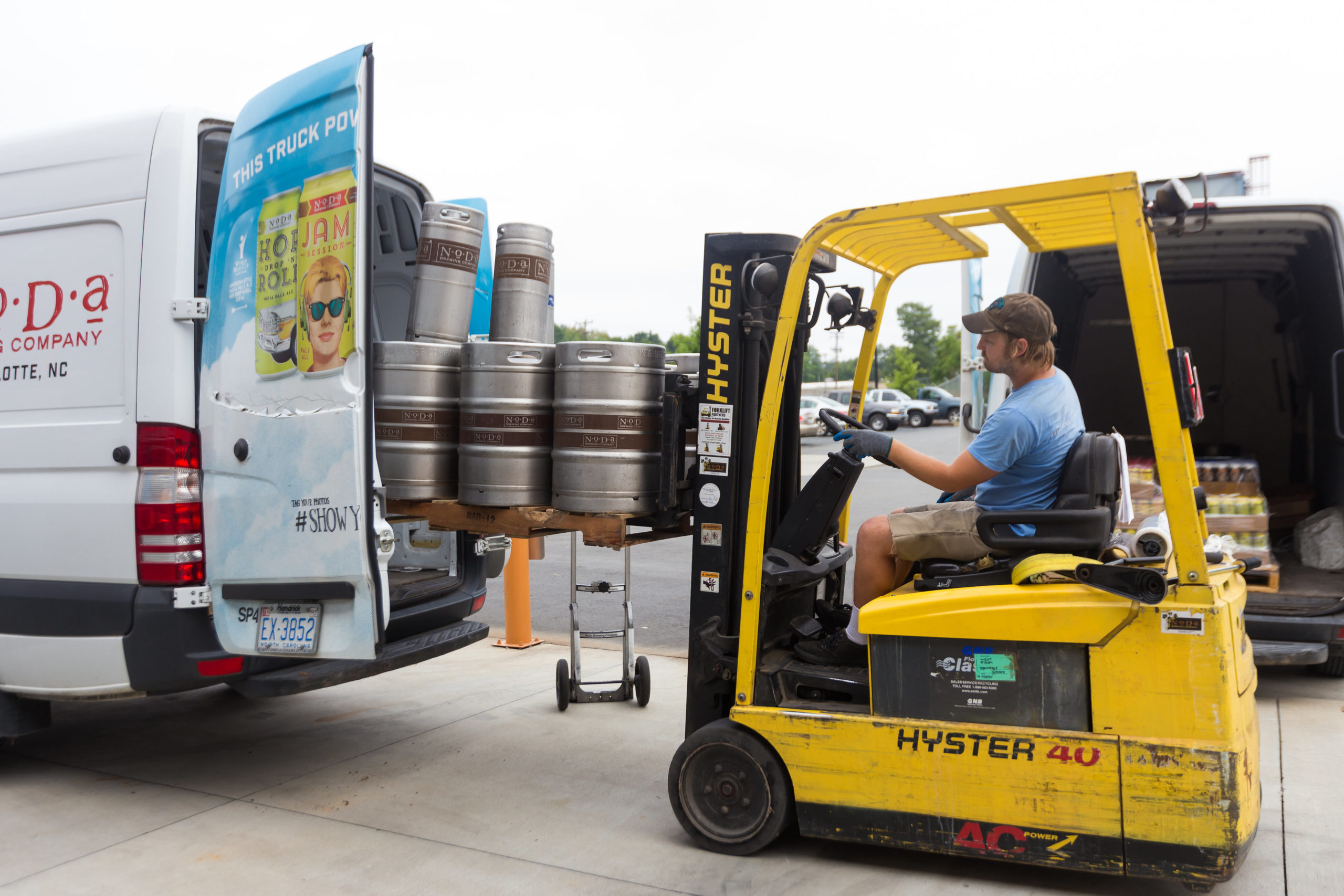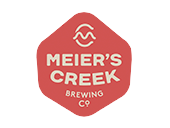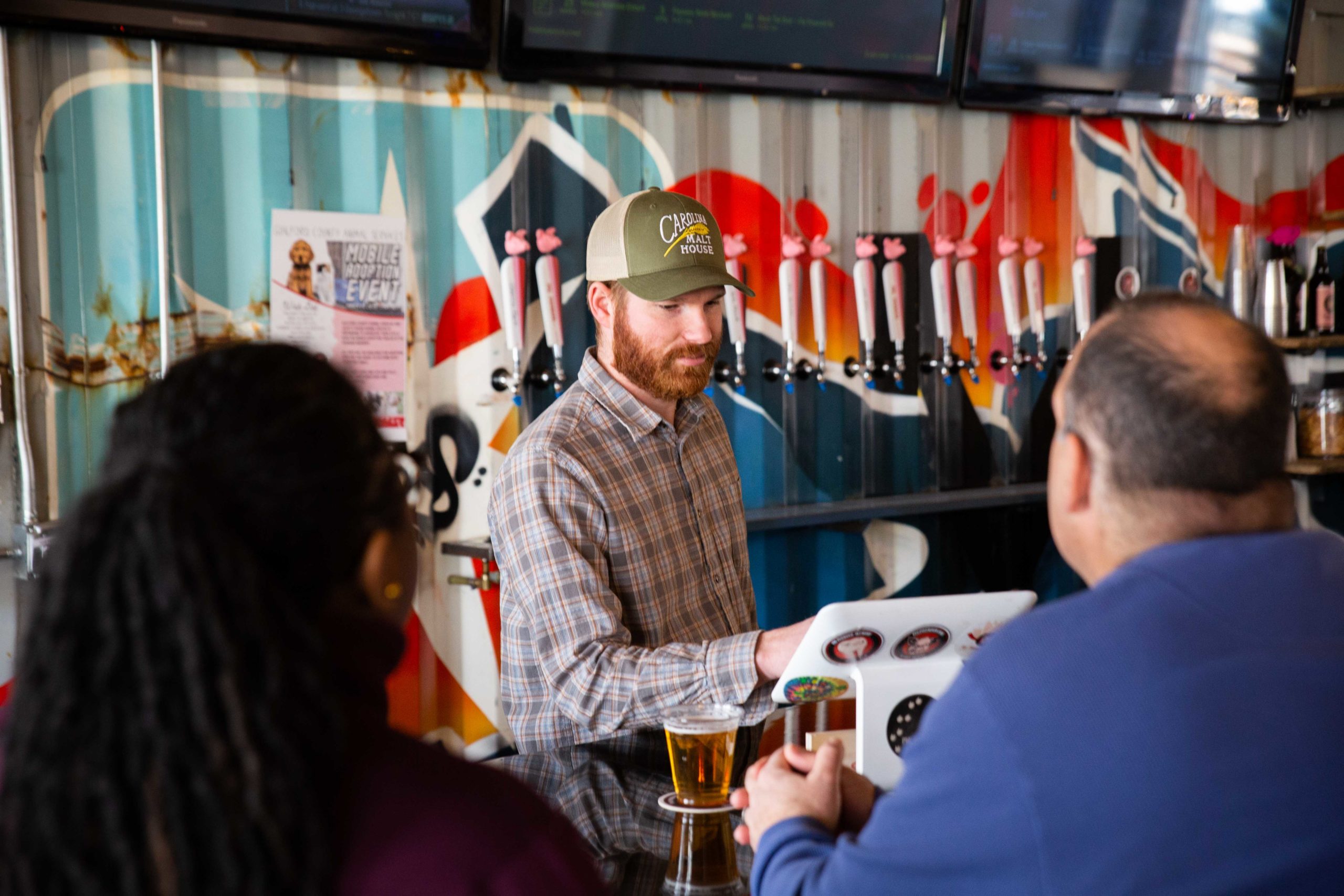Getting your craft beverages from tank to table isn’t exactly a walk in the park. For beer producers especially, success in this space requires more than just making great products—it demands strategic thinking, rock-solid relationships, and efficient processes to keep everything running smoothly. With the right strategies and beverage software backing you up, you can focus on what you do best—crafting exceptional beverages that keep customers coming back for more. Modern beverage ERP systems handle the complex stuff so you can concentrate on quality.
Whether you’re just starting to explore distribution channels or looking to optimize your existing network, understanding what it takes to build and maintain successful alcohol distributor relationships can make the difference between steady growth and stagnation. Let’s dive into the essential elements that can make or break your distribution success.
The Evolution of Alcohol Distribution: Understanding Today’s Landscape
Remember those old photos of horse-drawn beer wagons? Yeah, beer distribution channels have come a long way since then. While the traditional three-tier system still forms the backbone of distribution, craft producers today have more options than ever before. From self-distribution to specialty craft-focused distributors, the landscape has evolved to accommodate the explosive growth of craft beverages.
Navigating the Three-Tier System
The three-tier system might seem old-school, but it’s still the primary framework for alcohol distribution in most states. This system separates producers, distributors, and retailers, each with their own distinct role.
While it can sometimes feel restrictive, understanding how to work within this system is crucial for your success—your goal is to find distributors who understand your brand’s value and share your vision for growth. Think of it like finding the perfect partner for your business journey— someone who gets what you’re all about and wants to help you succeed.
Beer Distribution Channels: Finding Your Path to Market
While wholesale distribution through established distributors remains a common path, it’s not the only way forward. Some states allow self-distribution, giving producers more control over their products and relationships with retailers. Others are seeing success with hybrid approaches that combine multiple distribution channels. The beauty of today’s market is its flexibility, and the key is understanding which approach aligns best with your business goals and resources.
The Digital Distribution Revolution
E-commerce and subscription models have become increasingly vital distribution channels. Online sales platforms, club memberships, and subscription services offer unique opportunities to build direct relationships with consumers while maintaining higher profit margins.
This approach has gained particular momentum as consumers increasingly expect convenient, direct-to-door options. And let’s face it—who doesn’t love getting their favorite craft beverages delivered right to their doorstep? For beer producers, digital distribution requires its own strategic considerations. Success in this channel depends on:
- Strong Digital Infrastructure: Your online ordering system needs to be robust, user-friendly, and capable of handling complex shipping regulations for alcoholic beverages. Having the right brewery management system in place makes this whole process much smoother.
- Compelling Membership Programs: Club memberships and subscriptions should offer clear value through exclusive access, special releases, or member-only events.
- Strategic Marketing: Digital success requires thoughtful email campaigns, social media engagement, and targeted online advertising to build and maintain your customer base.
- Data Management: Tracking customer preferences, purchase history, and membership metrics helps optimize your digital distribution strategy over time.
While digital channels offer exciting opportunities for growth, many craft beverage producers still find tremendous value in traditional distribution partnerships. Understanding how to establish and nurture these relationships is crucial for long-term success.
Nailing Your First Distributor Meeting
First impressions matter—a lot. Your initial meeting with a potential distributor is essentially your pitch, your chance to show them why your brand deserves a spot in their portfolio. Success requires thorough preparation and strategic presentation.
Preparation Is Everything
Your brand story should be compelling and authentic, conveying not just what your product is but why it matters in today’s market. Come prepared with a professional presentation that outlines your vision, values, and growth trajectory. This isn’t just about current sales figures—distributors want to see your potential for long-term success.
Market analysis plays a crucial role in your pitch. Demonstrate a clear understanding of where your product fits in the current landscape and how it fills an unmet need. Include detailed demographic data about your target consumer and explain why your product resonates with them.
Your presentation should prominently feature growth plans and future innovations. Distributors want to partner with forward-thinking brands that have a clear vision for expansion. Whether it’s new product lines, packaging innovations, or market expansion plans, show them you’re thinking ahead.
The Power of Experience
Bringing samples to your meeting isn’t just a courtesy—it’s a strategic necessity. Let potential distributors experience your product exactly as a retailer or consumer would. This means paying attention to every detail:
- Temperature control for optimal tasting
- Proper glassware or serving vessels
- Professional product specification sheets
- High-quality marketing materials
- Packaging samples in various formats
Remember, you’re not just selling a product—you’re selling an experience. Make it memorable.
Setting Clear Expectations
During this initial meeting, open a dialogue about mutual expectations. Discuss your production capacity, minimum order requirements, and lead times. Be prepared to answer questions about your marketing support, promotional plans, and sales goals. Transparency at this stage builds trust and sets the foundation for a strong partnership.
Finding Your Perfect Distribution Partner
Choosing a distributor requires careful evaluation across multiple dimensions. This decision will impact your brand’s growth trajectory for years to come, so it’s worth taking the time to get it right.
Master your distribution channels with Ekos’ ultimate sales guide for independent alcohol producers: Get the Guide
Understanding Portfolio Management
Understanding beer distribution channels and how distributors manage their portfolios goes beyond simply checking who else they carry. For beer brands specifically, you need to understand how they manage category conflicts and allocate resources among competing brands. Ask specific questions about their category management approach:
How do they determine which brands to feature in different accounts? What criteria do they use for portfolio rationalization? How do they balance the needs of established brands versus newcomers? Don’t be shy about asking these questions—a good distributor will appreciate your thoroughness, and these answers will help you understand where your brand fits in their priorities.
Market Coverage and Capabilities
Let’s get real about what makes distribution work. Distribution success depends heavily on your partner’s infrastructure and capabilities. Think of it as your distributor’s toolbox—you need to know what tools they have and how well they use them. Evaluate their:
- Warehouse Network: Beyond just locations, understand their temperature control systems, inventory management practices, and quality control procedures.
- Delivery Operations: Look into their delivery frequencies, minimum order requirements, and their ability to handle special requests or rush orders.
- Sales Force Effectiveness: The size of their sales team matters less than their expertise and engagement. Ask about their training programs, account coverage strategies, and how they incentivize sales of new brands.
- Technology Infrastructure: Modern beer distribution channels require modern tools. Whether you’re Comprehensive beverage distribution software should integrate smoothly with yours for inventory management, order processing, and performance tracking.
Having these systems work together seamlessly isn’t just convenient; it’s essential for growing your business efficiently. The right business management platform can make all the difference.
Market Intelligence
Want to know what sets great distributors apart? It’s their ability to be your eyes and ears in the market. They should help you understand:
- Regional Trends in the Beer Market: What’s selling well in different markets and why?
- Competitive Analysis: How are similar products performing?
- Channel Performance: Which retail channels show the most promise for your category?
- Consumer Behavior: What are the buying patterns and preferences in your target markets?
Having a distributor who gets this stuff is like having a secret weapon in your business arsenal. The best partners don’t just move your product; they help you make smarter decisions about where to go next.
Building Strong Distributor Relationships
Picture this: you’ve found the perfect distributor. Great! But that’s just like getting married—now comes the fun part of building a lasting relationship. In today’s beer distribution channels, it takes work, communication, and the right tools to help you grow together.
The good news? When you’ve got solid systems in place to track everything from inventory to sales data, keeping your distributor relationship healthy becomes so much easier. A strategic approach to partnership management can significantly impact your brand’s success.
Communication Framework
Establish a regular cadence of communication that goes beyond basic sales reports. Think of these check-ins as your relationship maintenance schedule. Skip them at your own risk! Your check-ins should cover:
- Performance Analysis: Dive deep into sales data, market penetration metrics, and account-level performance.
- Market Intelligence: Share insights about consumer trends, competitive activity, and market opportunities.
- Strategic Planning: Collaborate on promotional calendars, new product launches, and market expansion plans.
- Challenge Resolution: Address any issues promptly and work together on solutions.
Pro tip: Using a comprehensive business management system makes these conversations much more productive—no more hunting through spreadsheets or arguing about whose numbers are right.
Run your business better with Ekos; learn why we’re the software of choice for business-savvy beverage producers: Learn More
Collaborative Growth Planning
Here’s where the rubber meets the road in your distributor partnership. Growth doesn’t happen by accident. It takes planning, coordination, and the right tools to track your progress.
Start with setting clear, achievable goals together. Maybe you’re aiming to boost taproom sales by 25% this quarter, or perhaps you want to expand into three new markets by year’s end. Whatever your targets, make them specific and measurable.
Then, create a roadmap to get there. This means developing market-specific strategies, setting up regular progress reviews, and having the right systems in place to track everything. When you and your distributor can see the same data in real time, making decisions becomes much easier.
Measuring Success: Data-Driven Distribution Management
Ready to get serious about tracking your success? Don’t worry—it’s not as complicated as it sounds. Sure, your craft beverage expertise got you this far, but adding some solid data to back up your decisions? That’s how you take things to the next level. And with modern tools, it’s actually pretty painless.
Essential Performance Metrics
Start by tracking market penetration rates across different territories and channels. This goes beyond simple sales numbers to understand how deeply your brand has penetrated potential accounts. Are you reaching 20% of possible accounts in a territory, or 80%? Understanding these numbers helps focus your expansion efforts effectively.
Account retention deserves special attention as a key indicator of brand health. High customer churn can signal various issues, from pricing problems to service quality concerns. Track not just how many accounts you’re gaining, but how many you’re keeping—and why.
Brand velocity metrics reveal how quickly your product moves off shelves once placed. In the beer distribution channel, this is your pulse check—how alive and kicking is your brand in the market? This crucial data point helps you understand real consumer demand and can inform everything from production planning to marketing strategies. Additionally, monitoring payment terms compliance and returns rates provides early warning signs of potential issues in your distribution chain.
Leveraging Technology for Growth
Here’s the thing about modern distribution – trying to manage it with spreadsheets and sticky notes is like trying to run a marathon in flip-flops. You can do it, but why make life harder? Consider implementing a brewery management system that offers:
- Real-Time Inventory Tracking: Say goodbye to monthly stock counts and hello to instant insights. Modern systems provide visibility into inventory levels across your distribution network, helping prevent stockouts while optimizing storage costs.
- Quality Control Monitoring: Because nobody wants their precious craft beverage sitting in a hot warehouse. Technology can help track temperature, handling conditions, and product age throughout the distribution chain, ensuring your brand reaches consumers in perfect condition.
- Automated Order Processing: Let robots handle the boring stuff. Streamline operations by automating routine tasks like order entry, confirmation, and tracking. This not only reduces errors but frees up valuable time for strategic activities.
- Performance Analytics: Knowledge is power, especially when it comes to growing your distribution footprint. Look for systems that can generate detailed reports on key performance indicators, making it easier to identify trends and opportunities for improvement.
The real magic happens when all your brewery technology solutions talk to each other. Integration between your production, inventory, sales, and accounting systems eliminates data silos and provides a complete picture of your distribution operations. This comprehensive view enables better decision-making and more efficient operations across your entire business.
On-Demand Webinar: Ekos and South City Ciderworks share tips and tricks for how to plan ahead, better manage your inventory, and ensure a smooth production process: Get Access
Level Up Your Distribution Game
Building successful beer distribution channels takes more than great relationships and killer products. It takes smart systems that can keep up with your growth. Whether you’re just starting out or ready to expand your reach, having the right tools in your corner makes all the difference.
That’s where Ekos comes in. Our comprehensive business management platform helps craft beverage producers streamline their distribution operations. With real-time inventory tracking, automated order processing, and seamless accounting integration, our platform helps you maintain those valuable distributor relationships by ensuring you’re always on top of your game. Ready to see how we can help transform your distribution operations? Schedule a demo today.





